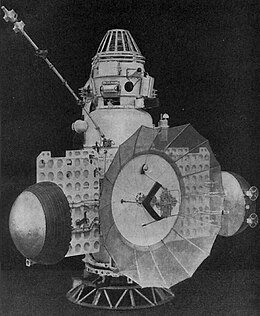1964: The USSR Launches Zond 1 to Venus
On April 2nd, 1964, the world watched in anticipation as the Soviet Union embarked on an ambitious mission to Venus. The launch of Zond 1 marked a significant effort in the ongoing space race between the USSR and the United States. This interplanetary probe was designed to gather valuable data about Venus, the second planet from the Sun.
The 1960s were a time of intense competition between the superpowers, with both nations striving to demonstrate their technological prowess and scientific capabilities. The USSR had already achieved several milestones in space exploration, including the first manned spaceflight by Yuri Gagarin in 1961. The launch of Zond 1 was another step towards establishing Soviet dominance in the realm of space exploration.
Despite the high hopes for this mission, Zond 1 faced numerous challenges right from the start. Technical malfunctions plagued the spacecraft, preventing it from fulfilling its objectives. As a result, no data was returned from Venus, leaving scientists and engineers disappointed.
The Era of Early Space Exploration
The launch of Zond 1 highlighted the daring ambitions of the space race era. Both the USSR and the United States were pushing the boundaries of what was possible in space exploration. The quest to reach other celestial bodies, such as Venus, was driven by a desire to expand our understanding of the universe and to showcase technological superiority.
However, the limitations of space technology at the time were also evident. The technical malfunctions that plagued Zond 1 were a stark reminder of the challenges faced by scientists and engineers in this nascent field. The harsh conditions of space, the vast distances involved, and the complexities of interplanetary travel all posed significant hurdles that needed to be overcome.
Despite the failure of Zond 1, the USSR did not give up on its ambitions to explore Venus. Subsequent missions, such as Venera 3 in 1965, would go on to achieve significant milestones, including the first successful impact on another planet’s surface. These missions provided valuable data about Venus and paved the way for future exploration.
The Legacy of Zond 1
Although Zond 1 did not fulfill its intended objectives, its legacy should not be overlooked. The mission served as a valuable learning experience for scientists and engineers, helping them identify and address the technical issues that had plagued the spacecraft.
Furthermore, Zond 1 played a crucial role in advancing our understanding of Venus and the challenges associated with exploring this hostile planet. The data gathered from subsequent missions built upon the foundation laid by Zond 1, contributing to our knowledge of Venus’ atmosphere, surface conditions, and geological features.
In conclusion, the launch of Zond 1 in 1964 was a significant event in the history of space exploration. It represented the intense competition between the USSR and the United States during the space race era. While the mission ultimately failed to return any data from Venus, it highlighted the daring ambitions and technological challenges of the time. The legacy of Zond 1 lives on through subsequent missions that successfully explored Venus and expanded our understanding of the universe.
For more information about the Zond 1 mission and the history of space exploration, you can visit the following external references:

